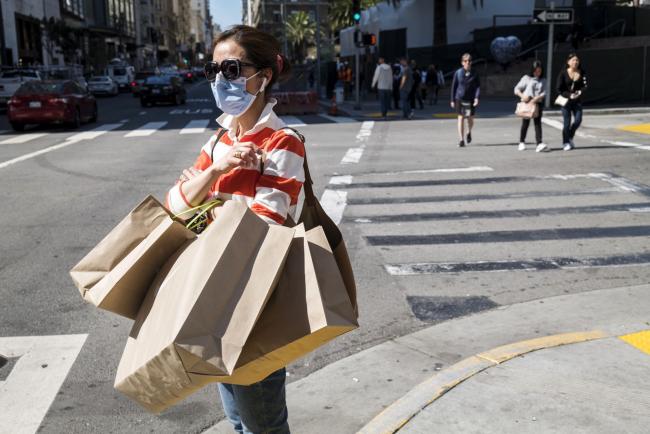(Bloomberg) -- While the official data-releases on employment, inflation and gross domestic product will eventually show the effect of the coronavirus on economic activity, they will be behind the curve in deciphering how large the effect is on American consumers.
Stock and bond markets have priced in expectations of an economic blow from the virus. The S&P 500 on Monday recorded the worst day on Wall Street since the financial crisis, while Treasury yields plummeted, crude plunged and credit markets buckled.
But for most Americans, the pain is just beginning. Here are five areas where a slowdown from U.S. consumers cutting back may show up first. By and large, indications are that consumption -- the biggest part of the U.S. economy -- has so far slowed only slightly.
1. Hotels
Some Americans are avoiding travel because of concerns of being exposed to the virus on flights, trains or at hotels. Organizers of South by Southwest canceled this year’s arts, music and technology festival in Austin, Texas, which last year drew about 13,000 people from 41 countries. Google (NASDAQ:GOOGL) scrapped a major developer conference and the International Monetary Fund and World Bank switched the format of their spring summit to online.
Occupancy at U.S. hotels fell 1.7% to 64.1% in the week ended Feb. 29, an indication that coronavirus is discouraging travel especially from abroad, according to data tracker STR.
International airport markets like Chicago, New York and San Francisco reported declines, while hotels in markets that mostly rely on domestic travelers like Orlando held up somewhat better, according to the firm’s weekly report. Seattle, near the epicenter of the outbreak in the U.S., saw an increase for the week.
2. Retail sales
Redbook Research’s weekly report on year-over-year comparable store sales gives an insight on whether consumers are still shopping.
U.S. comparable sales rose 5.9% in the week ended Feb. 29, Johnson Redbook data show. Discounter sales remained strong, according to Bloomberg Intelligence analysts Poonam Goyal and Abigail Gimartin, and they are expected to rise in March with warmer weather. There’s no obvious sign of people avoiding crowded stores, yet, because of concerns about the virus.
3. Box Office
Americans also seem to be avoiding movie theaters as they worry about public gatherings. Last weekend, Disney’s animated feature Onward opened to a disappointing $39.1 million in sales, the third-worst opening for a Pixar film ever.
Entertainment sales are volatile and driven by what’s showing, so it can be hard to pinpoint changes related to a health scare. For the weekend, Comscore says the receipts from top 10 movies fell by 53.5% from a year earlier, when “Captain Marvel” opened to a huge $153.4 million take in North America.
4. Broadway Tickets
Similarly, Broadway’s box office is a measure of whether audiences are showing up to the theater, typically drawing older customers compared with movie theaters. New York has had a cluster of coronavirus cases, which might discourage people from joining big crowds.
In the week ended March 8, Broadway attendance was down 6.5% from a year earlier, according to the Broadway League. Still, popular shows like Hamilton operated at full capacity.
The Broadway League said in a statement that shows are continuing. “We have significantly increased the frequency of cleaning and disinfecting in all public and backstage areas beyond the standard daily schedule, and we have added alcohol-based sanitizer dispensers for public use in the lobby of every theatre,” it said.
5. Consumer Comfort
Consumers’ confidence is reported weekly in the Bloomberg Consumer Comfort index, which has been declining since late January, though remains much higher than during the 2007-09 recession. Consumer spending is responsible for about 70% of U.S. gross domestic product and has held up as other areas, such as business spending, have weakened.
Confidence among Americans slid to a 10-week low as views of the buying climate dimmed amid mounting virus fears, the latest report shows. The comfort reading for personal finances showed improvement despite the rout in U.S. stocks.
